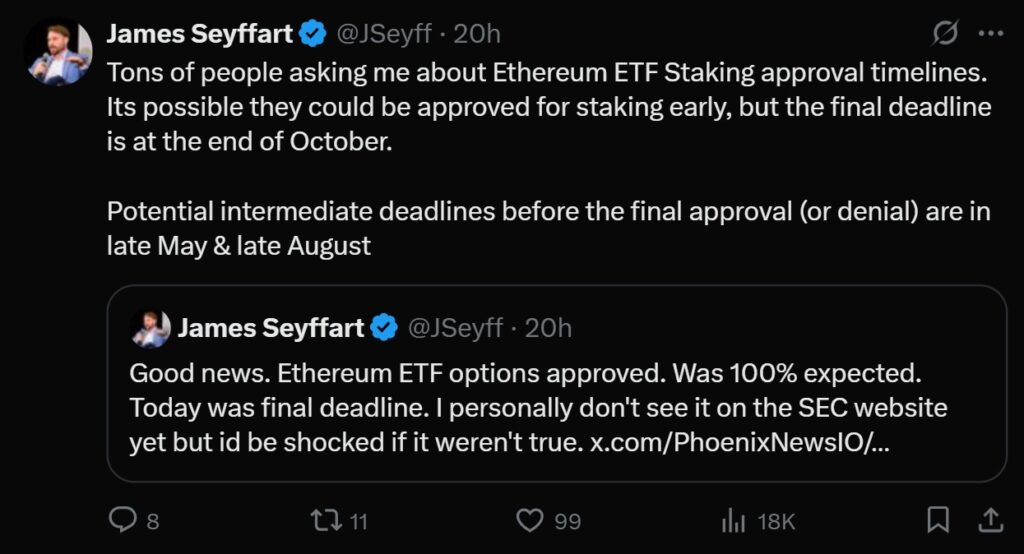The world of cryptocurrency is experiencing dynamic shifts, heavily influenced by statements from leaders of the US Federal Reserve under Jerome Powell’s guidance. Recently, a prominent Fed official assured that the central bank is “absolutely” prepared to take necessary actions to avert any impending financial crisis, whether from ongoing trade tensions or other economic challenges. While the anticipated “Fed pivot” that could alter interest rates might still be some months away, there are signs that the Fed is nudging towards easing financial conditions, having already implemented a notable reduction in the redemption cap on Treasurys.
The ripple effect of the Federal Reserve’s decisions reaches global financial markets, significantly impacting Bitcoin (BTC) and the larger cryptocurrency landscape. Research from Kingston University of London underscores the increased correlation between Bitcoin and liquidity, highlighting how pandemic-era policies have entwined the two. In this week’s Crypto Biz newsletter, we focus on key developments in both the Ethereum exchange-traded fund (ETF) market and the Bitcoin mining sector, alongside the Fed’s recent commentary on liquidity management.
“We would absolutely be prepared to backstop markets if economic and financial conditions deteriorated rapidly,” said Boston Fed President Susan Collins. She recognizes the current tranquility in liquidity but emphasizes that the Fed is equipped with tools to respond if conditions shift.
Amid ongoing regulatory movements, the US Securities and Exchange Commission (SEC) has recently approved options trading for several spot Ether (ETH) ETFs, a significant milestone for ETH as it aims to attract institutional investors. This move allows ETF investors to hedge against asset downturns, complementing a broader trend of growing institutional interest in cryptocurrency assets. Analysts suggest that this approval could pave the way for additional developments, including potential approvals for staking services on ETH ETFs in the near future.
In a parallel development, Canadian regulators have taken a progressive step by approving multiple crypto staking ETFs centered on Solana (SOL), showcasing a distinct regulatory approach compared to the United States. These advancements are expected to resonate across the crypto market, especially as institutions seek stable avenues within this evolving landscape.
In the bitcoin mining sector, Bitdeer is realigning its strategy amidst concerns surrounding the US-led trade war impacting global supply chains. The company is shifting focus to enhance its self-mining capabilities, signaling a broader trend among miners adjusting to external market pressures. This pivot reflects an ongoing adaptation within the industry as it faces evolving economic landscapes and changing demand for mining hardware.
Impact of Federal Reserve Policies on Financial Markets and Cryptocurrency
The recent developments surrounding the US Federal Reserve and its policies have crucial implications for both traditional financial markets and the cryptocurrency landscape. Here are the key points to consider:
- Fed’s Willingness to Act:
- The Fed is prepared to implement necessary measures to avert a financial crisis, particularly amid potential liquidity shortages or disruptions.
- Boston Fed President Susan Collins emphasized that they have tools at their disposal to address market functioning issues.
- Impact on Global Markets:
- Changes in Fed policy significantly influence global market dynamics through US dollar liquidity.
- These effects have become more pronounced since the COVID-19 pandemic, affecting assets like Bitcoin (BTC).
- Interest Rate Outlook:
- Current expectations indicate the Federal Open Market Committee (FOMC) is likely to maintain interest rates in May but may consider a cut in June.
- Ethereum ETF Approvals:
- The US SEC has approved options trading for various spot Ether (ETH) ETFs, potentially increasing institutional investment.
- Options allow ETF investors to hedge risks, enhancing the attractiveness of these investment vehicles.
- Emergence of Crypto Staking ETFs in Canada:
- Canadian regulators have approved Solana (SOL) staking ETFs, allowing investors to earn yields while participating in staking activities.
- Bitcoin Mining Sector Transformation:
- Bitdeer is shifting focus to self-mining amidst concerns over supply chain disruptions due to trade wars, which could impact mining hardware availability.
- There is a growing trend of investing in Bitcoin mining, including influential figures aligning with self-mining ventures.
The interplay between the Federal Reserve’s policies, market liquidity, and investor confidence shapes the financial landscape, influencing everything from interest rates to the valuation of innovative asset classes like cryptocurrency.
Individuals and investors should closely monitor these developments, as they can significantly impact investment strategies, access to capital, and the overall sentiment in both traditional and digital asset markets.
Comparative Analysis of Recent Developments in the Crypto Market
The recent landscape of the cryptocurrency market has witnessed significant shifts, particularly influenced by the actions of the US Federal Reserve and regulatory movements concerning Ethereum and Solana exchange-traded funds (ETFs). The Fed’s cautious approach towards policy adjustments, spearheaded by Jerome Powell, may present both advantages and challenges for various stakeholders in the financial ecosystem. One of the notable competitive advantages of the Fed’s stance is the assurance from credible figures like Boston Fed President Susan Collins, who emphasizes preparedness to respond to liquidity constraints. This reassurance can bolster investor confidence, especially amidst ongoing uncertainties stemming from trade wars or other economic disruptions.
However, this cautious approach comes with its disadvantages. Prolonged indecisiveness could lead to a lag in capital flow, impacting not just traditional markets but also digital currencies. The correlation of Bitcoin’s performance with liquidity levels – a revelation backed by recent academic research – highlights how critical Fed policies are to the crypto space. Any perceived delay in necessary actions could result in a dip in Bitcoin prices, adversely affecting investors and traders alike.
In parallel, the SEC’s recent approvals for options trading on various spot ETH ETFs marks a critical milestone for institutional investment in Ethereum. This significant movement positions Ethereum favorably against its competitors by enhancing accessibility and hedging options for investors, potentially attracting a broader range of institutional capital. Yet, it also poses challenges for other cryptocurrencies that do not yet have a similar regulatory foothold, revealing a competitive disadvantage in their quest for mainstream acceptance.
Meanwhile, Canada’s approval of staked Solana ETFs by major asset managers demonstrates a progressive regulatory approach that may leave US-based products lagging if the SEC remains indecisive. With yields between 6% and 8%, these products could entice US investors seeking returns, thus putting pressure on similar US offerings to adjust to a more competitive trading landscape. This could lead to dissatisfaction among US investors eager for innovative crypto investment products that remain available to their Canadian counterparts.
Lastly, Bitdeer’s pivot towards self-mining highlights an evolving strategy to mitigate risks associated with supply chain vulnerabilities exacerbated by the trade war. This strategic shift could safeguard Bitdeer’s operations, but it may also reflect a broader industry concern regarding external pressures that could stifle the growth of crypto mining companies reliant on international hardware supply lines. As prominent players make these adjustments, others in the mining sector could find themselves at a disadvantage if they cannot adapt as swiftly.
Overall, as these various developments unfold, the landscape illustrates how regulatory decisions and central bank actions can create a ripple effect, greatly influencing both investor sentiment and the competitive positioning of cryptocurrencies within the market. Investors need to stay vigilant and adaptive to seize opportunities while navigating potential pitfalls in such a dynamic environment.
















